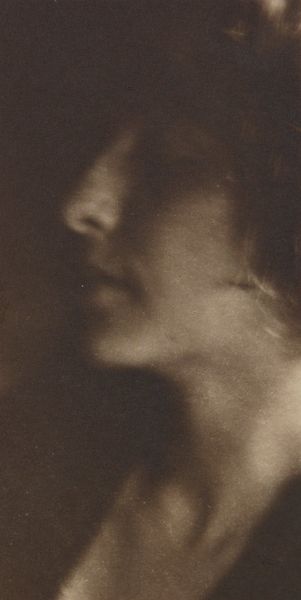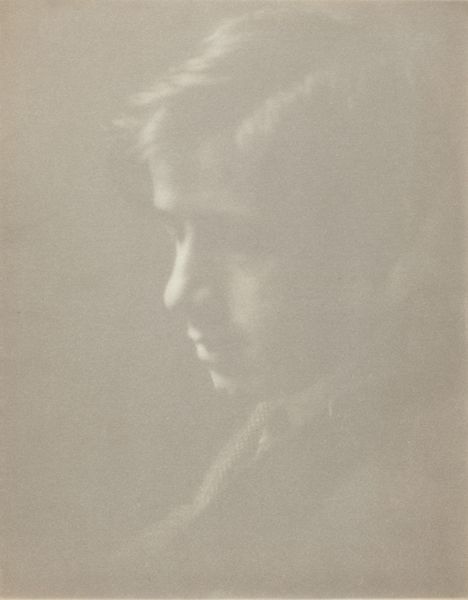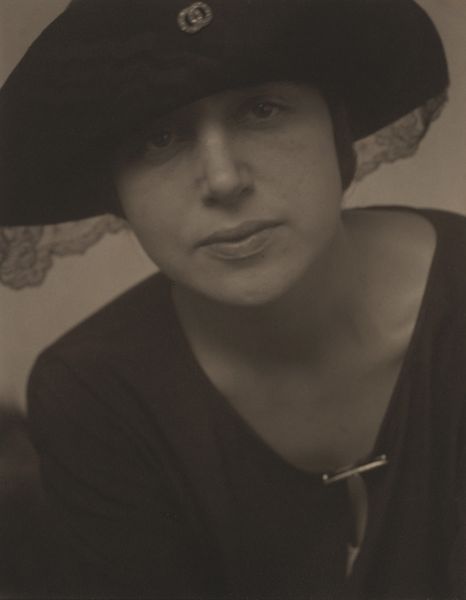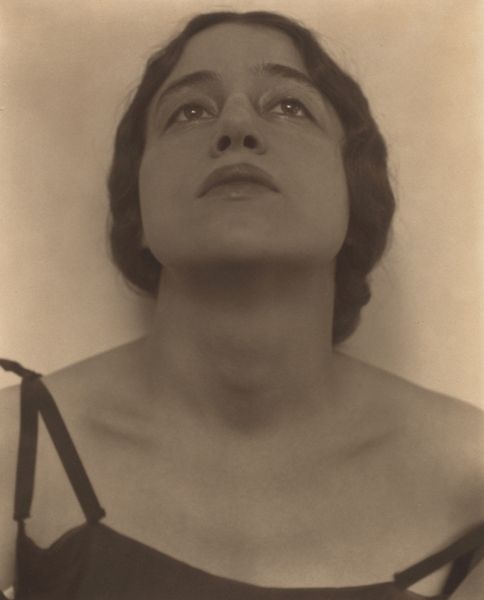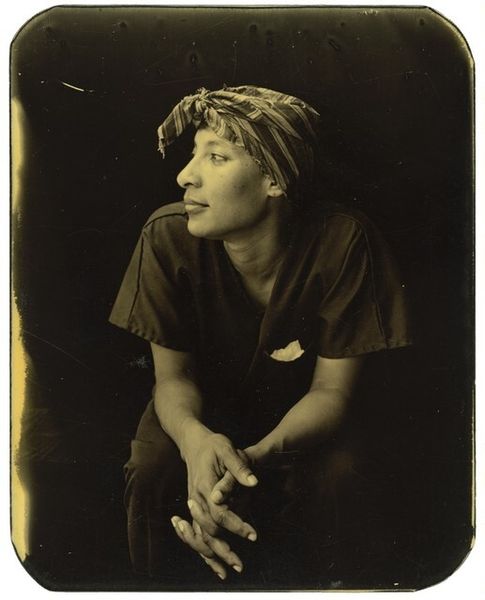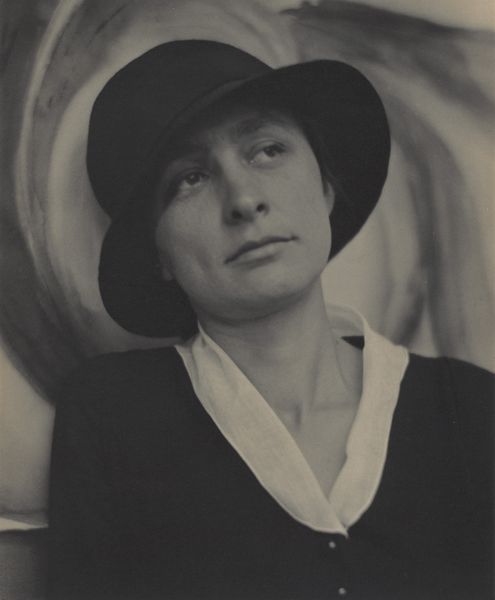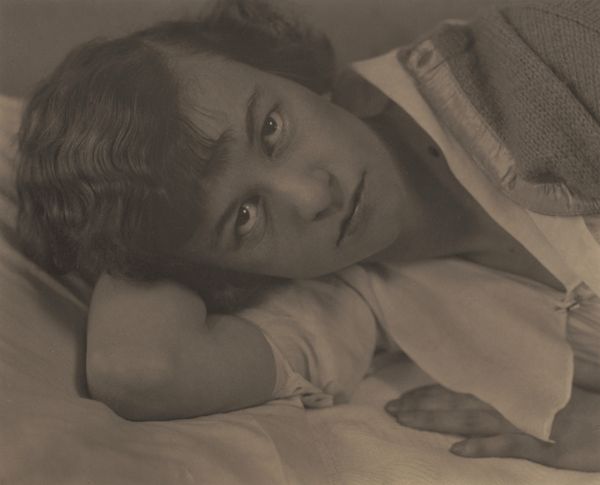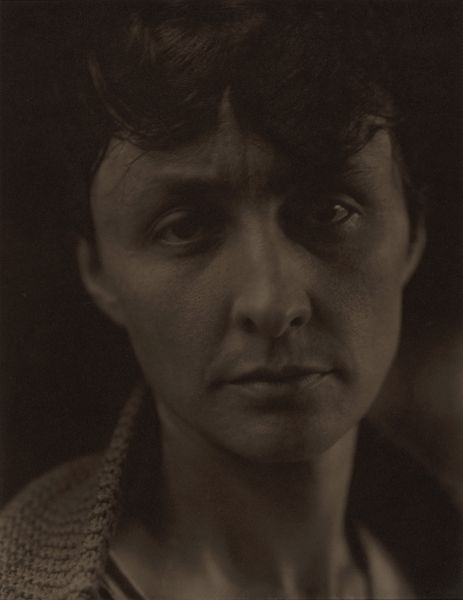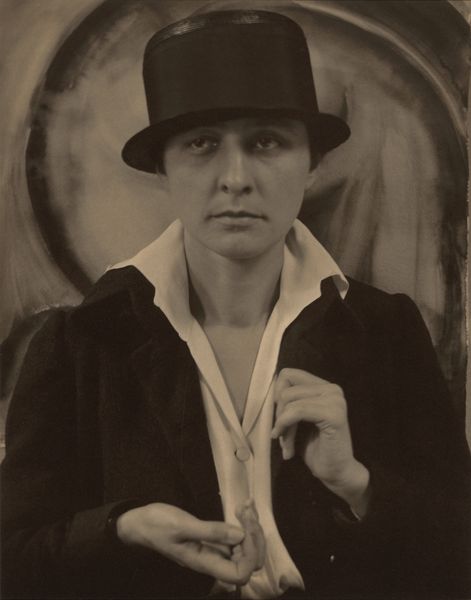
photography, gelatin-silver-print
#
portrait
#
self-portrait
#
low key portrait
#
portrait
#
photography
#
gelatin-silver-print
#
modernism
#
monochrome
Dimensions: image: 18.9 x 23.3 cm (7 7/16 x 9 3/16 in.) sheet: 20.2 x 25.3 cm (7 15/16 x 9 15/16 in.) mat: 55.1 x 45.2 cm (21 11/16 x 17 13/16 in.)
Copyright: National Gallery of Art: CC0 1.0
Curator: Welcome. We're standing before a gelatin silver print entitled "Georgia O'Keeffe," created by Alfred Stieglitz between 1918 and 1919. Editor: It’s intense, right? The way she’s framed, almost cornered by the light and shadow—it feels incredibly intimate and a little melancholy, like catching her in a private moment. Curator: Indeed. This portrait exists within the larger context of Stieglitz's work, a significant series that not only documented O'Keeffe, but also served to construct her public persona as a modern artist and an independent woman. The series becomes almost a visual biography. Editor: A biography in light and shadow. I like that. The monochrome really amplifies the starkness of the emotions. It’s like he's not just showing us what she looks like, but who she is, or at least who he perceives her to be. Did O'Keeffe have a say in how these were presented? Curator: That's the crux of it, isn’t it? The power dynamics are definitely at play. While it undoubtedly elevated her career, it also positioned her, in some ways, under his gaze. Feminist critiques have long analyzed how Stieglitz’s depictions might have overshadowed O’Keeffe's own self-representation. He essentially controlled the narrative. Editor: Right, the male gaze… I see it. But the artistry… you can't deny the impact. Maybe it's both beautiful and problematic, a captured moment in their complicated story. The low key lighting isolates her from everything except feeling. I am mesmerized by her strong profile, so sure, and yet… hesitant? Vulnerable? Curator: Precisely. The intersection of the artistic merit and the inherent power dynamics make it a complicated work to approach. It raises critical questions about authorship, representation, and the gaze, inviting us to reflect on who holds the power in shaping narratives. Editor: I agree; it gives me so much to consider about visibility, agency, the artist-muse relationship… Thanks. Curator: Thank you. Hopefully, this offers just one way of engaging with the portrait’s legacy and ongoing cultural conversation.
Comments
No comments
Be the first to comment and join the conversation on the ultimate creative platform.


